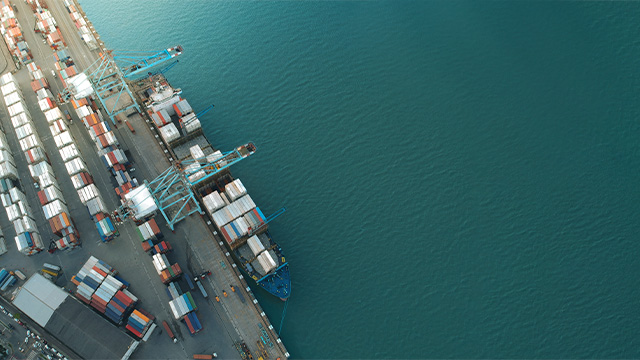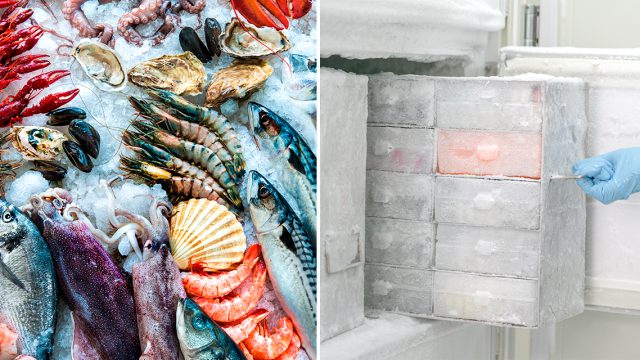5 rail megatrends – assessing the industry’s future direction of travel
It’s no understatement to say there’s a lot of interest in the railway sector today. A fact that’s due to evolving expectations from local municipalities and institutional investors, passengers, equipment manufacturers, and of course regulators.
Which raises the key question: what’s driving this interest? What factors are influencing new possibilities in rail, and what barriers exist to limit such ambition?
To answer these questions, it’s time for another ‘key trends update’ from Thermo King. Insight that draws on our interactions with service providers and policy makers – to highlight 5 key factors shaping the industry’s outlook.

#1: increased urbanization = a growing demand for rail transport
Let’s start with the obvious: passenger numbers are up post-Covid. For example, in 2022 rail passenger numbers across the EU increased by 50.9% compared to 2021 – and 75.9% over 2020.
Such a rise is hardly unexpected, but the scale of it is:
· In Germany throughout 2023 passengers travelled 104.2 billion passenger-kilometers – a new record
· In France, passenger numbers are now predicted to reach a new peak of 16.52 million by 2028
· The largest increases came in Ireland, Italy, and Spain, which more than doubled their passenger numbers between 2020 to 2022
This is certainly good news for regional governments and their policies to combat the twin challenges of traffic congestion and carbon emissions. Particularly in heavily urbanized areas, which continue to grow in population by an average of 0.4% each year.
But the situation is also putting pressure on railway infrastructures, creating the fear that demand will inevitably outstrip capacity. What’s needed is investment, which is itself a problem given the slow financial returns that come with the years needed to build new metro lines, bridges, and tunnels etc.
Megatrend #2: sustainability remains a key consideration
Europe’s [1] railways are already ahead of the game in sustainability. In fact, it’s estimated that the industry represents the least carbon intensive mode of mass transport – contributing only 0.4% of the transportation sector’s overall emissions.
What helps here is the growing electrification of train travel, which has a knock-on effect for all equipment found on a train. For example, at Thermo King our Heating, Ventilation, and Air-conditioning (HVAC) technologies for rail have long been diesel free.
Improvements are still needed though, which places the emphasis on the refrigerants in use. The goal here being to:
· Minimize the environmental impact – toward a carbon neutral future
· Complying with regulations – such as the Kigali Agreement covering the consumption of hydroflourocarbons (HFCs)
· Increasing the recycling or sustainable decommissioning of harmful refrigerants at the end of their operating life
Megatrend #3: safety and training remain a concern
Passenger safety remains an immediate concern across the industry. Add in new refrigerants, many of which are flammable, and the design of equipment like HVAC units are under increasing scrutiny.
Manufacturing such equipment and rolling stock to maximize safety features though is only half the story. Training is also a critical element, to ensure technologies and fuels are used in an appropriate – and therefore safe – manner. That means:
· Ensuring train staff understand the safest way to deal with an emergency
· Training maintenance crews in the safe handling of chemical refrigerants (including safe, sustainable disposal)
· Maintaining an informed workforce able to handle such chemicals across the extended supply chain (including storage facilities)
Megatrend #4: ever-changing design concerns
Passenger car rolling stock is typically built to last 30 years, and during that time they need to adapt to changing demands. Yet today, design concerns are proving more fluid than ever, and having to stretch to accommodate a host of new requirements.
Passenger comfort is still top of mind, and maintaining a consistent on-board temperature of 22 – 26 degrees Celsius. The challenge here for manufacturers when accommodating greener refrigerants is to first understand what the ambient temperature outside is expected to be. A task that’s becoming increasingly difficult in recent years
Second, such calculations feed into a HVAC unit’s design. Usually positioned on a roof such units can impact weight, which in turn can demand more powerful brakes and even overdesigned wheels. This can lead to inefficient equipment across the design ecosystem, thereby impacting overall costs.
Megatrend #5: the push toward greater standardization
A last trend, closely associated with design concerns, relates to convenience and simplifying the management of rail cars throughout their 30-year lifecycle – including a complete refurbishment after 15-20 years of service.
Such a concern is driving the desire for greater standardization in both equipment design and energy requirements. For example:
· There is a growing call for standard communication protocols to aid with the cybersecurity dimension of train equipment
· Ease of maintenance is another driving force, and the delivery of ‘plug and play’ capabilities
· With no standard agreement on which of the more sustainable refrigerants to use, HVAC equipment will increasingly need to become ‘refrigerant agnostic’
Inspire your future ambitions
The rail sector continues to enjoy great popularity from both passengers and municipal authorities alike for its low carbon, mass transport capabilities. To inspire future performance, Thermo King continues to work with rail manufacturers in developing new innovations – while also providing a center of excellence for safety and emissions testing.
To find out what that could mean for your operation, click here.
Other relevant articles that might interest you

Rail
HVAC refrigerants in the rail sector: Assessing your options.
We all like to work and travel in comfort, no matter where in the world the …

Marine
Sustainable reefer refrigeration: barriers and opportunities.
Let’s start with the good news: container shipping is the greenest method of transporting cargo …

